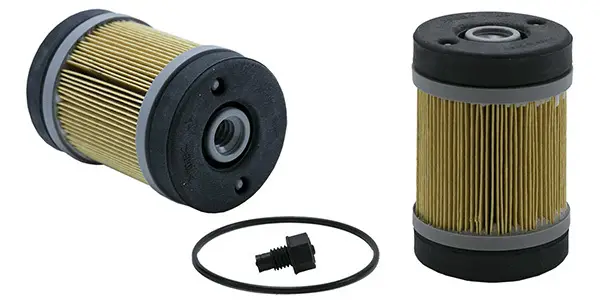Maintaining your semi truck’s DEF (Diesel Exhaust Fluid) system is crucial for compliance, engine efficiency, and longevity. Dirty or clogged DEF filters can lead to system malfunctions, reduced fuel efficiency, and costly repairs. This guide explains why Def Filters For Semi Trucks are essential, how to select the right one, and practical maintenance tips.

Why DEF Filters Are Important for Semi Trucks
DEF filters play a critical role in your truck’s emissions system:
- Protect SCR Components: Filters prevent contaminants from damaging the Selective Catalytic Reduction (SCR) system.
- Ensure Efficient NOx Reduction: Clean DEF ensures proper conversion of harmful nitrogen oxides into harmless nitrogen and water.
- Extend Component Lifespan: Protects pumps, injectors, and dosing modules from clogging or corrosion.
- Reduce Downtime: Fewer DEF system failures mean fewer roadside repairs and delayed deliveries.
Read too: Top Trucking Companies That Still Have Manual Transmissions
According to Wikipedia, maintaining the DEF system is essential for modern diesel engines to meet emission standards.
Key Features to Look For in DEF Filters
When selecting Def Filters For Semi Trucks, consider:
- Filtration Efficiency – Look for high-micron filters that trap fine particles.
- Material Quality – Stainless steel or high-grade polymer materials resist corrosion.
- Compatibility – Ensure the filter matches your truck’s DEF system model and year.
- Flow Rate – Proper flow ensures accurate DEF dosing and system performance.
- Service Life – Choose filters that balance durability with replacement frequency.
Top DEF Filter Options for Semi Trucks
| DEF Filter Model | Truck Compatibility | Filter Life | Features |
|---|---|---|---|
| Donaldson P181119 | Freightliner, Kenworth | 15,000 mi | High filtration efficiency |
| Fleetguard DFS195 | Volvo, Mack | 12,000 mi | Durable, corrosion-resistant |
| Baldwin B3306 | Peterbilt, International | 15,000 mi | Easy installation, reliable |
| WIX 24332 | All major brands | 10,000 mi | Affordable, OEM quality |
How to Replace a DEF Filter Step-by-Step
- Safety First: Park the truck on a level surface and wear gloves.
- Locate the DEF Filter: Typically near the DEF tank or dosing module.
- Drain DEF: If necessary, carefully drain the fluid to prevent spills.
- Remove Old Filter: Unscrew or unclip, depending on your truck model.
- Install New Filter: Ensure correct orientation and proper seals.
- Refill DEF Tank: Use fresh, clean DEF fluid.
- Check System: Run the engine and verify no error codes appear.
Maintenance Tips for Long-Term DEF System Health
- Replace filters at manufacturer-recommended intervals (usually 10,000–15,000 miles).
- Avoid contamination by storing DEF in sealed, clean containers.
- Inspect DEF lines and pumps for leaks or corrosion.
- Keep a spare DEF filter on hand for long hauls.
- Use high-quality DEF fluid to maximize filter efficiency.
FAQ – Frequently Asked Questions
Q1: How often should I change DEF filters in semi trucks?
A: Most manufacturers recommend every 10,000–15,000 miles, depending on truck model and driving conditions.
Q2: Can I use aftermarket DEF filters?
A: Yes, but ensure they meet OEM specifications and flow rates for your truck’s DEF system.
Q3: What happens if a DEF filter clogs?
A: Clogging can trigger SCR warnings, reduce NOx reduction efficiency, and potentially damage dosing modules.
Q4: Are DEF filters universal?
A: No, filters vary by make, model, and year. Always check compatibility before purchase.
Q5: Can I clean and reuse a DEF filter?
A: Most DEF filters are not reusable. Replacement with a new filter is recommended for optimal performance.
Q6: How can I prolong DEF filter life?
A: Use high-quality DEF fluid, avoid contamination, and replace filters regularly according to manufacturer guidelines.
Conclusion
Investing in high-quality Def Filters For Semi Trucks protects your engine, reduces maintenance costs, and ensures compliance with emission regulations. Proper selection, regular replacement, and preventive care help you avoid costly repairs and downtime.
Leave a Reply